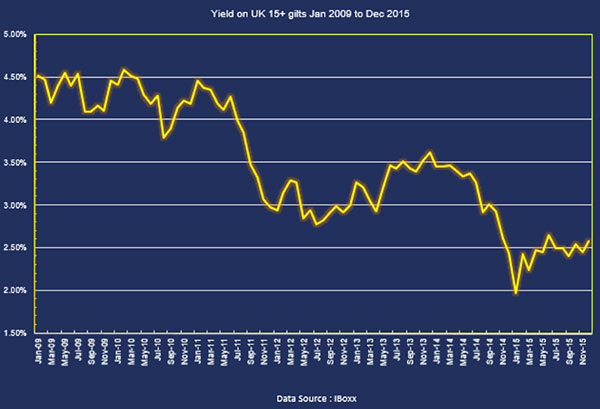Understanding interest rates is key to assessing their impact
From the blog: Changes in interest rates, and more specifically bond yields, can have profound influences on defined benefit and defined contribution schemes, so it is important trustees understand how they work.
Trustees may have seen both sides of low gilt yields, a significant increase in their defined benefit liabilities and excellent returns on fixed income and certain liability-driven investment portfolios.
Both DB and DC schemes have similar investment concerns in that rising yields will see falling capital values. DB schemes have their liability issues, as potentially do DC schemes through their default and lifestyling strategies.
With US interest rates on the rise, there is the possibility this will act as a precursor for an interest rate rise in the UK.
Some see this as the ‘normalisation’ of markets; the beginning of the process that will see yields return to pre-crisis levels. This is by no means certain.
Many commentators feel low interest rates are the ‘new normal’. So, it is important that trustees understand the potential impacts of both scenarios on their schemes.
Understanding interest rates
The question is: What should trustees do?
The individual circumstances of any particular scheme mean that it is impossible to give a direct answer to this question. There are however two simple questions that will help you determine your preparedness to deal with this issue.
1) Can you clearly explain the following fixed income concepts:
- the yield curve,
- the yield gap and
- duration?
2) Can you clearly explain what your fixed income portfolio does for your scheme in terms of:
- risk management,
- income generation, and
- interest rate, inflation and/or annuity rate hedging?
If you can, then there is a good chance that you have the core knowledge to understand interest rate risk and how this might be relevant to your scheme.
If you are less confident, you have just identified a training need.
As trustees, our role is not to try and predict the future. Instead we need to be sure that we have appropriate knowledge and understanding to be able to:
- Identify when we need advice
- Understand and challenge the advice we are given
- Act on the advice
This basic mantra holds true for many aspects of trusteeship. In this context it helps trustees make informed decisions rather than taking a bet on the future direction of interest rates.
Jonathan Reynolds is client director at independent trustee company Capital Cranfield Trustees
Most Viewed
- ‘A fundamental point of fairness’: MPs call for action on discretionary increases
- TPR to scrutinise ‘systemically important’ professional trustee firms
- What does Labour have in store for the pensions industry?
- Defining the role of the scheme actuary
- Five themes at the forefront of a sustainable future


